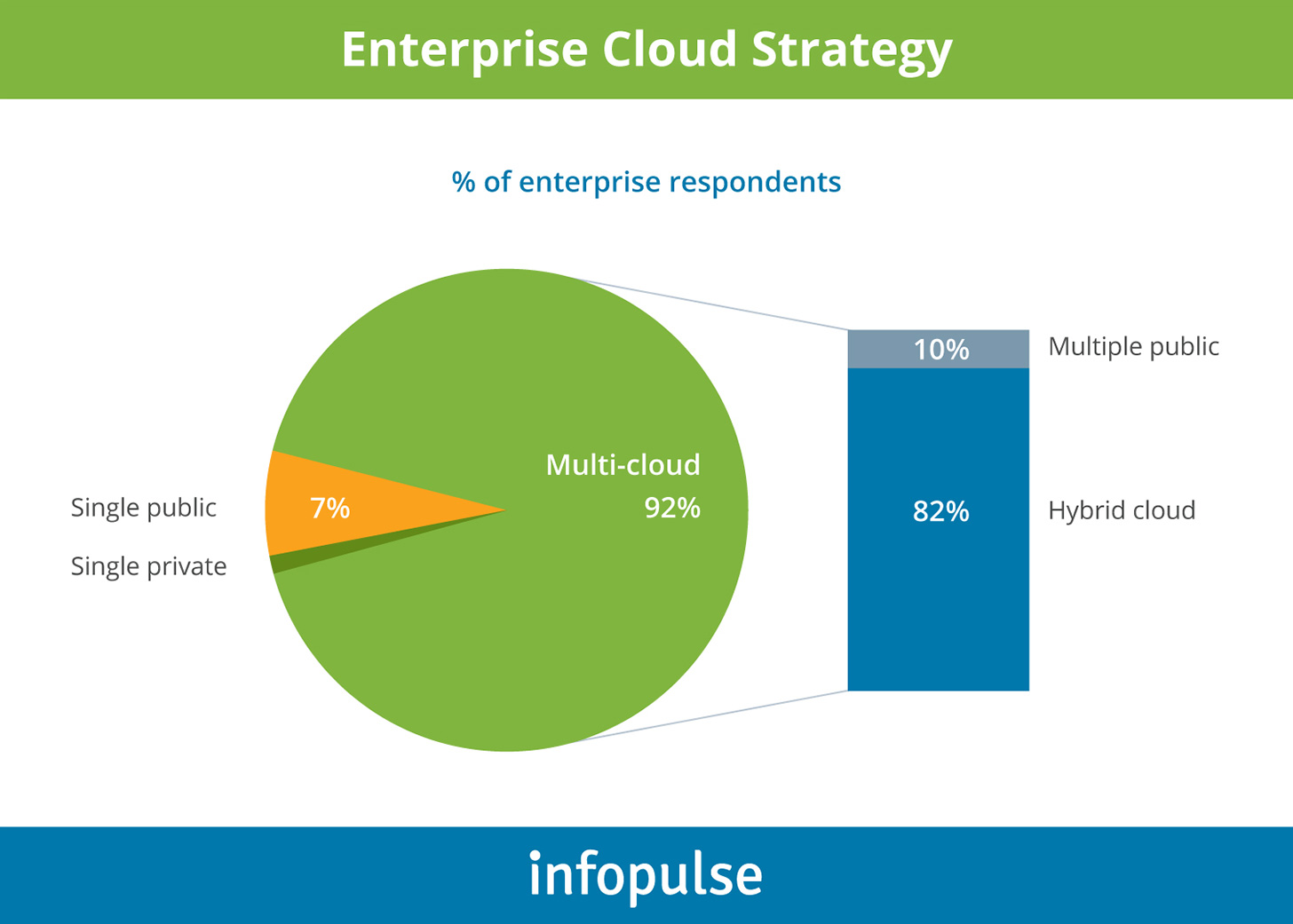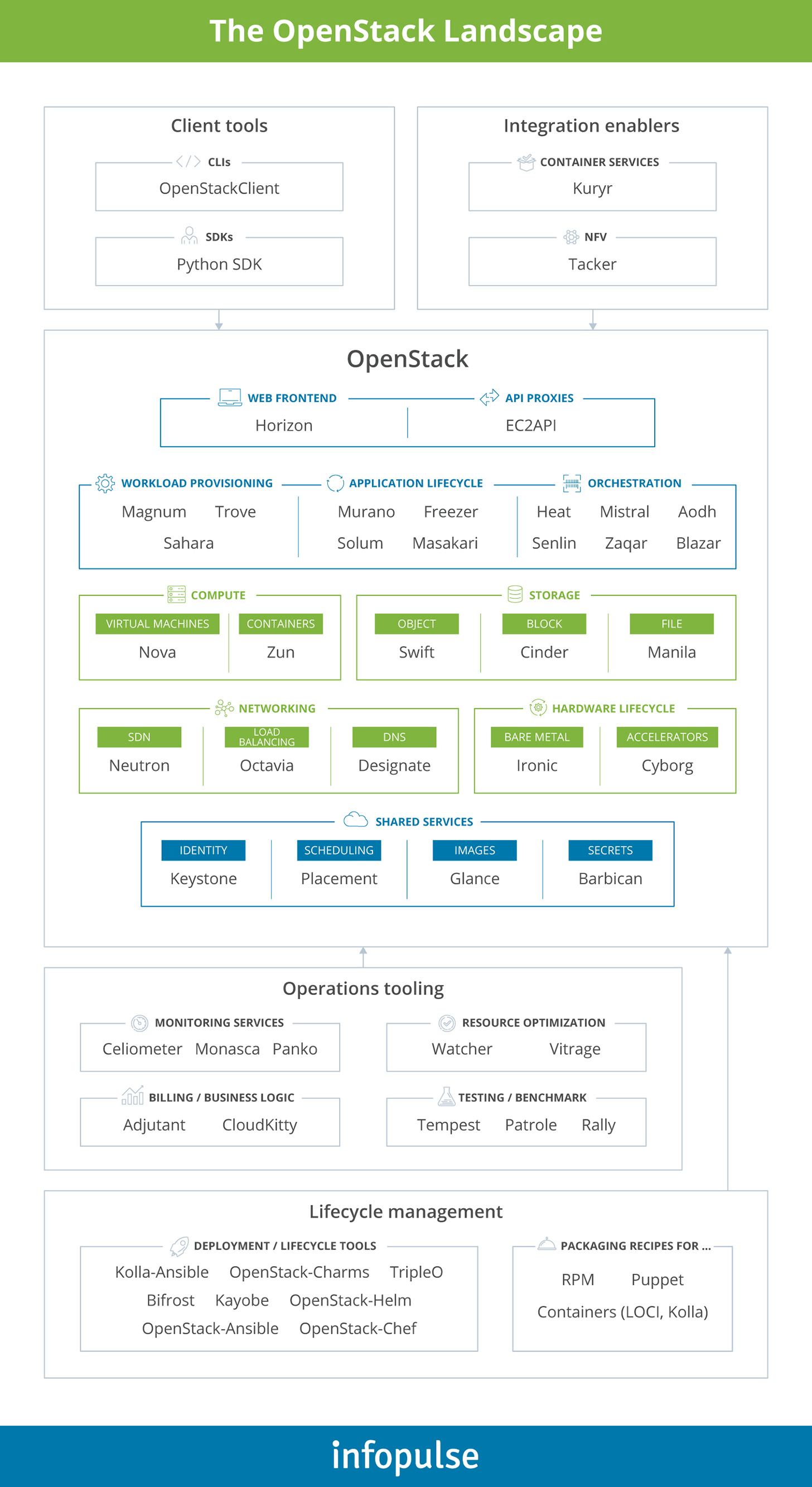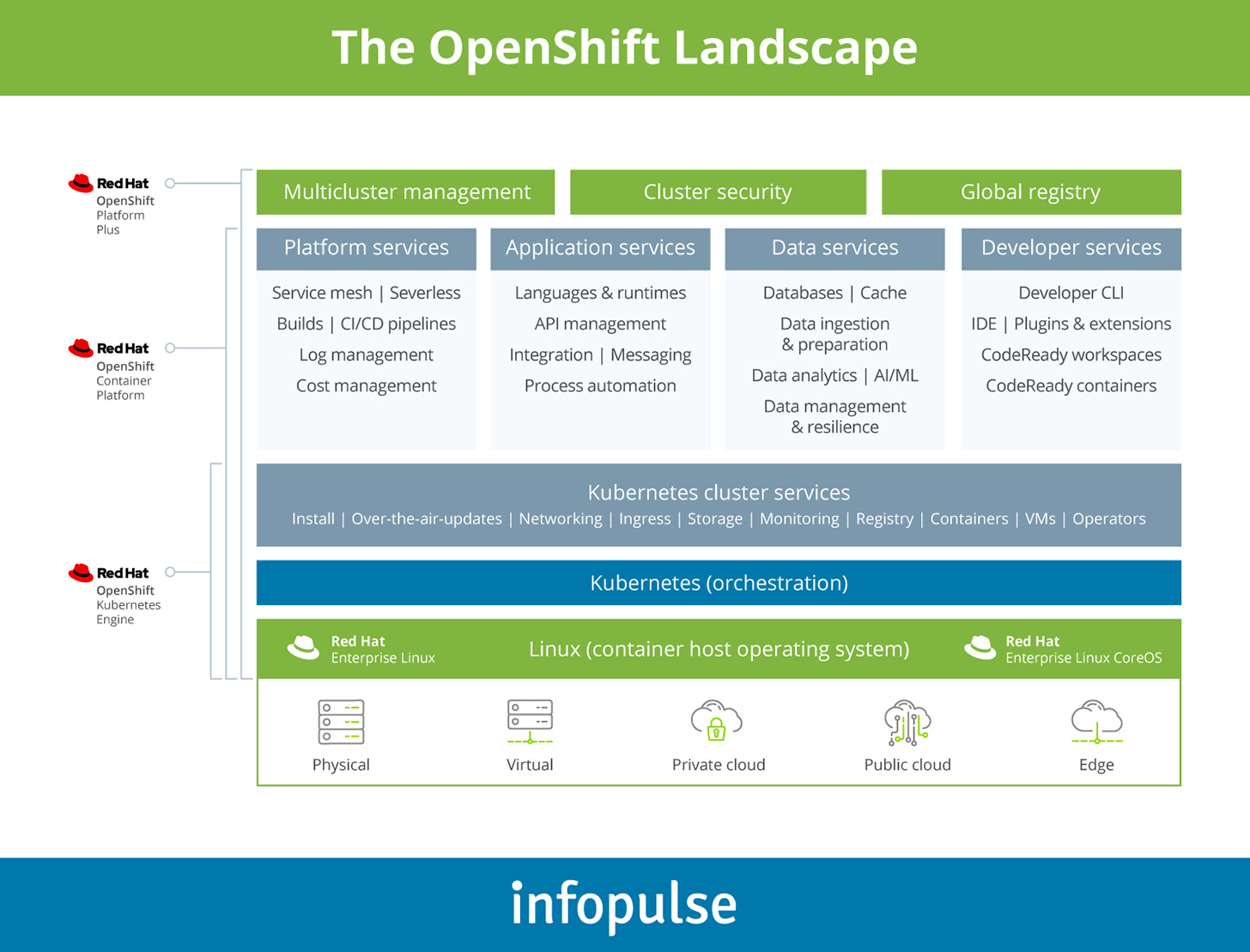Open-Source Cloud Solutions: a License for Achieving Multi-Cloud Interoperability
As businesses continue migrating more workloads to the cloud(s), many inevitably realize that few vendors share the same standards for seamless interoperability. This factor, alongside vendor lock-in risks, prompts many to explore alternative routes.
What is Open Source Cloud Infrastructure?
By this point, most are familiar with the concept of open-source software (OSS) — community-written source code, distributed freely without any licensing costs or restrictions on usage, modifications, or updates.
A lot of public cloud computing companies — AWS, Microsoft Azure, Google Cloud Platform — are powered by some open-source components such as Linux OS or Java frameworks, plus integrate with other open-source cloud services such as Kubernetes, Apache, and others. So do many enterprises.
However, the above does not make either of them fully open-source. Public cloud companies do not provide open access to their source code and place limitations on the degree of customization and extension.
Open source cloud solutions emerged as an alternative option for deploying large-scale networks of virtual machines and building local scalable infrastructures such as virtualized data centers or private clouds.
Beyond that, the OSS community created an array of add-on solutions for governing, orchestrating, and managing public cloud computing resources, as well as enabling interoperability between different private and public clouds. That is establish multi-cloud or anywhere operations.
In the above sense, open-source cloud infrastructure can be described as a vendor-agnostic approach to leveraging local hardware, public cloud resources, and open-source cloud technologies to set up, manage, and operate a hybrid or multi-cloud environment.
The Pressing Need for Better Cloud Interoperability
With soaring rates of cloud adoption, many business leaders found themselves cherry-picking different types of public and private cloud resources for optimal workload allocation.
As of 2020, 92% of enterprises have a multi-cloud strategy and another 82% opted for a hybrid cloud approach.

Gartner further predicted that by 2024, two-thirds will successfully reduce vendor dependency through multi-cloud.
Indeed, multi-sourcing enables businesses to rebalance reliance on a single vendor and respectively, reduce the operational risks, arising from vendor lock-ins. However, this decision often comes at the cost of:
- Low or no application portability between cloud platforms
- Low-to-no feasibility of enabling interoperability between cloud vendors
As a result, most multi-cloud efforts are mainlyfocused on risk mitigation, rather than gaining extra operational or tech benefits from other cloud vendors.
Additionally, as IDC reports, over 79% of businesses already experienced the disadvantages of using multiple clouds. The commonly cited concerns include:
- 40% mention cloud cost control and optimization pitfalls
- 38% point out data privacy and security challenges
- 31% say it’s difficult to ensure homogenous security/protection
- 30% face issues with cloud governance and compliance
- 30% lack cloud security expertise
When it comes to private cloud deployments and subsequent hybrid cloud strategy adoptions, there is another host of challenges to account for. Enterprises choose to leave as much as 31% of existing applications as is — without choosing to modernize, adapt, or port them to a hybrid environment.
Ultimately, the challenge lies in the fact that interoperability between local-to-cloud and cloud-to-cloud environments need to be assured on multiple levels:
- Application Portability
- Platform Portability
- Application Interoperability
- Platform Interoperability
- Management Interoperability
Public cloud vendors have been understandably reluctant to open up their ecosystem to competing players. Due to this, many independent open-source cloud software providers emerged to fill the market gap.
Some platforms, such as Apache CloudStack, provide OSS for developing private clouds and Infrastructure as a Service (IaaS) cloud computing platforms. Others like Cloud Foundry, focus on enabling multi-cloud app portability.
What unites such open-source cloud solutions is the joint effort towards reducing the complexities and constraints of multi-cloud and hybrid cloud management.
Open Source Cloud Solutions: Main Advantages
While few organizations today manage to deploy a fully open-source cloud architecture (and avoid using commercial cloud solutions), many rely on open source to fill in certain gaps in IT operations — design private clouds, port applications between clouds, or ensure effective cloud resources management.
In short, most open-source cloud solutions enable the convergence of:
- Virtualization — the ability to run multiple VMs on a single server or pooling server resources into a shared environment.
- Containerization — the ability to develop and deploy multiple applications on a single VM and distribute them across different cloud environments.
In every case, the decision to use OSS over proprietary software can bring in the following benefits:
- Reliance on free and open data formats and standards that facilitate data exchanges across platforms — a crucial factor for big data analytics.
- Greater visibility and management abilities across all assets help establish homogenous governance and security standards.
- Increased agility of resource usage in terms of hardware. A lot of open-source cloud solutions for server virtualization run on bare metal.
- Access to better cloud orchestration tools and technologies, which can be deployed across the board.
- Ability to port applications using container technologies. So that you could develop, deploy, and manage all solutions in one place.
- Unlimited flexibility in terms of technology choices and architecture patterns. Unparalleled customization and extensibility opportunities.
Top 4 Open Source Cloud Platforms
As mentioned briefly, open-source cloud vendors provide an array of offerings — from the ability to deploy IaaS cloud platforms, using local resources to open source cloud management toolkits.
Some vendors have mono offerings. Others developed a service portfolio of different solutions. The latter are more mature and better suited for enterprise use. These include:
OpenStack
OpenStack offers a set of open-source software components for assembling cloud infrastructure. Hardware vendor-agnostic, Open Stack lets you virtualize available hardware and then manage the pooled computing, data storage, and networking resources via APIs or a convenient dashboard.

OpenStack is versatile when it comes to deployment scenarios and can be used to assemble cloud environments locally, within a partnering data center, and on the edge. Moreover, the baseline components can be extended into custom solutions and tools for supporting multi-cloud operations.
That is what Walmart did. The grocery retailer used OpenStack to create a Galaxy — a multi-cloud validation tool for analyzing performance or architecture issues across OpenStack clouds.
OpenShift
OpenShift, a RedHat solution (partially owned by IBM), is an open-source PaaS solution for developing, managing, and hosting apps in the cloud and on-premises environments. With the Kubernetes engine in the core, OpenShift enables users to rapidly create, manage, and scale workloads across connected environments, as well as orchestrate resource clusters across the board.

One of the competitive features is automated installation on hybrid cloud infrastructure. It also comes with ample tools for setting up custom configurations. Users can leverage native software-defined networking solutions, plus manage containers and VMs from a single control point. This can dramatically improve the development teams’ productivity, as well as reduce time-to-market for new products.
Porsche Informatik, for example, leveraged this platform to set up a private cloud container environment. This provided the team with self-service capabilities for cloud resources and facilitated the implementation of DevOps best practices. Subsequently, the company reduced the development timeline for new features from weeks to hours.
Cloudify
Cloudify specializes in cloud resources orchestration. This open-source cloud platform provides a host of container orchestration and infrastructure automation solutions for building a staunch and scalable multi-cloud infrastructure.
Their main pitch is to help organizations turn heterogeneous infrastructure, networking, and security settings into “reusable” templates that are easy to replicate across cloud, edge, and on-premises environments.
Additionally, Cloudify provides an array of solutions for application monitoring (again, across environments), compliance and security monitoring tools, resource usage monitoring, and cost optimization tools, as well as one of the most comprehensive orchestration capabilities.
Some customers, like one Belgian telecom company, also used Cloudify to set up virtualized cloud networks with a Network Functions Virtualization (NFV) approach as part of their strategy for introducing 5G.
WS2O
Microservices is the architecture of choice for cloud-native applications. Yet, many businesses still have a large portfolio of legacy products. If you rely on Service Oriented Architecture (SOA), WS2O can help you make the most out of it with a robust API management solution.
Unlike other open-source cloud platforms, WS2O provides more tools for creating new public APIs or building internal API-based integrations between systems hosted in different environments (cloud or on-premises).
You can either leverage and rate APIs provided by the community or develop custom solutions for your systems. Then deploy and control them from one interface. WS2O also offers a handy auto-recovery feature that helps mitigate endpoint suspension issues. Moreover, the platform has an API-driven Identity and Access Manager (IAM) for encoding proper access management rights and secure authentication across connected environments.
To Conclude
Multi-cloud operations are inherently prone to interoperability challenges. However, the ever-growing breed of open-source cloud solutions and technologies helps business leaders consolidate disparate resources into a homogenous system, governed by unified open data standards, secure APIs, well-orchestrated containers, and infrastructure automation tools.
Cloud computing has many layers. Respectively, open-source cloud solutions often cover one or several aspects of it, such as virtualized software management, IaaS or PaaS deployments, or cloud resource management. When you compare vendors, make sure you understand the scope and boundaries of the provided functionality. While OSS is highly extensible, it always makes more economical sense to start building your own custom features atop a platform.

![Cloud-Native for Banking [thumbnail]](/uploads/media/cloud-native-solutions-for-banking_280x222.webp)
![Generative AI and Power BI [thumbnail]](/uploads/media/thumbnail-280x222-generative-AI-and-Power-BI-a-powerful.webp)
![Cloud Native vs. Cloud Agnostic [thumbnail]](/uploads/media/thumbnail-280x222-cloud-agnostic-vs-cloud-native-architecture-which-approach-to-choose.webp)
![DevOps Adoption Challenges [thumbnail]](/uploads/media/thumbnail-280x222-7-devops-challenges-for-efficient-adoption.webp)
![Azure Monitor for SAP [thumbnail]](/uploads/media/thumbnail-280x222-azure-monitor-for-sap-solutions-an-overview.webp)

![Mortgages Module Flexcube [Thumbnail]](/uploads/media/thumbnail-280x222-Secrets-of-setting-up-a-mortgage-module-in-Oracle-FlexCube.webp)
![Digital Alignment Drivers [thumbnail]](/uploads/media/thumbnail-280x222-the-top-forces-driving-digital-alignment.webp)
![AWS vs. Azure Cloud Platform [Thumbnail]](/uploads/media/thumbnail-280x222-comparison-of-aws-vs-azure-when-each-cloud-platform-works-best.webp)
![Cloud-Native Maturity Model Assessment [thumbnail]](/uploads/media/thumbnail-280x222-what-Is-the-cloud-native-maturity-model-definition-and-assessment-criteria.webp)